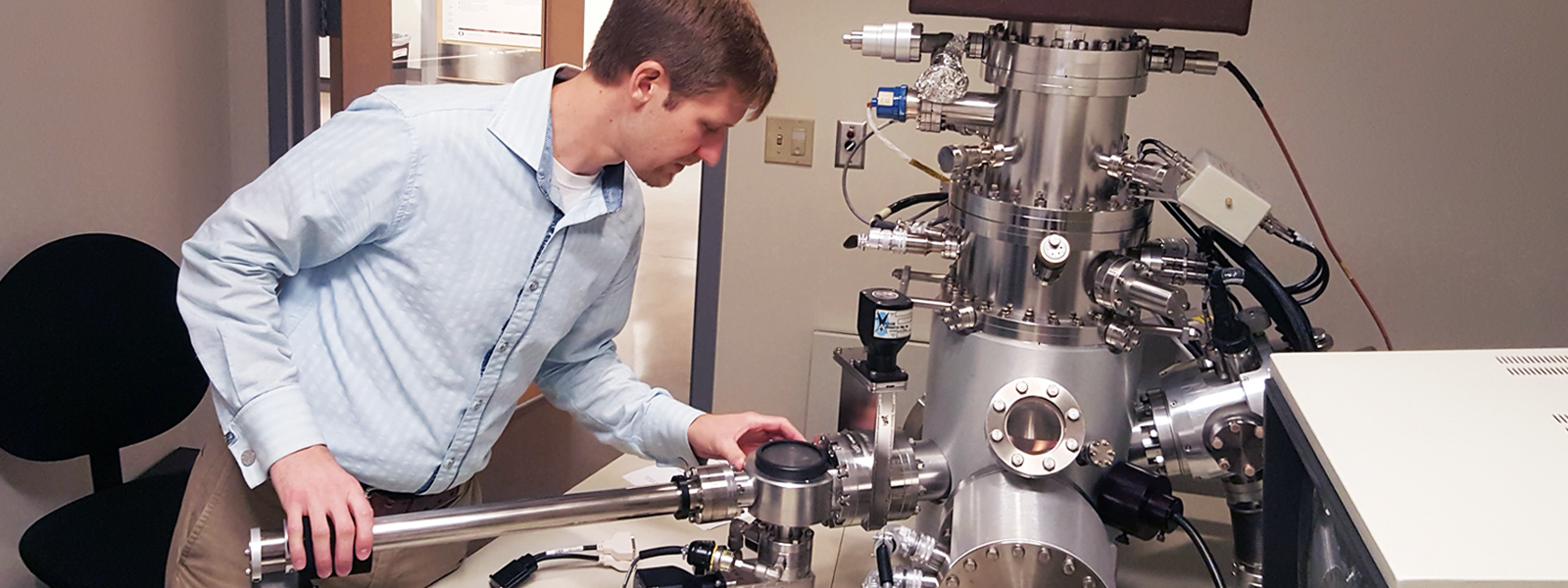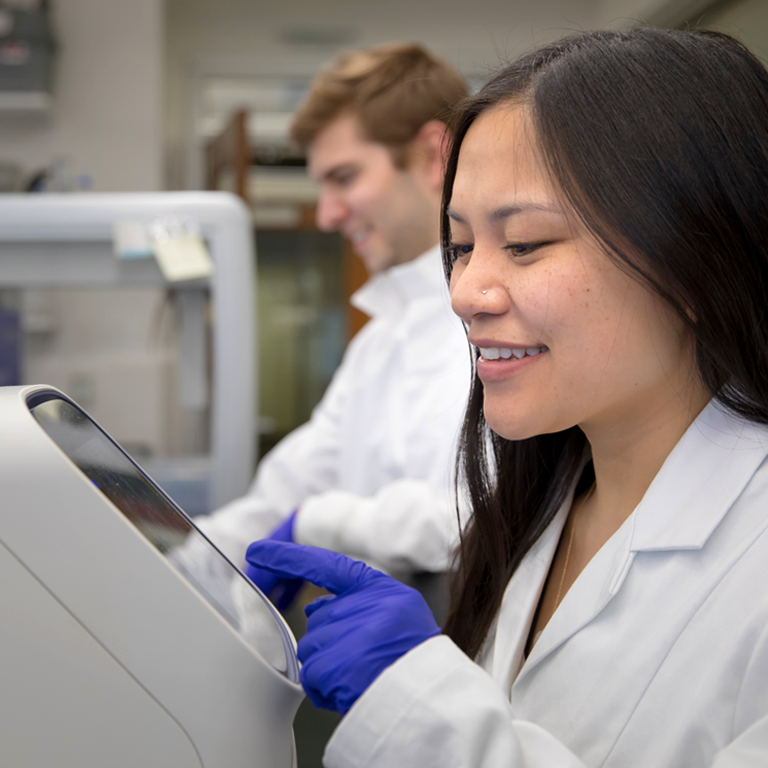Semiconductors, advanced materials, and devices
Tomorrow’s tech relies on Oregon ingenuity and workforce
Semiconductors are an essential component of electronic devices, enabling advances in communications, computing, healthcare, military systems, transportation, clean energy, and countless other applications.
The 2022 CHIPS & Science Act aims to boost American competitiveness, innovation, and national security by driving investments in R&D, manufacturing, and workforce development, particularly within the semiconductor industry.
The University of Oregon brings exceptional strengths in fields central and complementary to semiconductors research and development, including materials science; optical, molecular and quantum science; basic and applied biological sciences; metrology; and bioengineering.
The Semiconductor Industry Association projects that the semiconductor workforce will grow by nearly 115,000 jobs by 2030, more than 50% of which will require at least a four-year degree. The UO is a national leader in high-impact workforce development that recruits and trains diverse students through innovative, applied master’s degree, and PhD programs.

Research Facilities, Centers, and Institutes
Our researchers, including Nobel laureate in physics David Wineland, accelerate discoveries and innovation across priority areas in semiconductors, advanced materials and devices, and metrology.

Materials Science Institute (MSI) researchers study the structure and properties of materials and serve Oregon as a resource in these sciences. Since 1985 the Institute has more than tripled the size of its research program, developed four new graduate programs in materials science, and contributed to the state's prosperity through collaboration with more than 25 Oregon companies.
Research strengths:
- Sustainability
- Novel materials
- Toxicity, nanosafety, human implants
- Biophysics, biochemistry, bioinformatics
- Quantum sensors
The Oregon Center for Optical, Molecular, and Quantum Science (OMQ) facilitates research and education in the sciences wherever optics, spectroscopy, quantum science, and the physical investigation of atomic and molecular processes are involved—in either fundamental aspects or technological applications.
Research strengths:
- Quantum (physics, computing optics, mechanics)
- Nanoscale systems
- Spectroscopy
The Oregon Advanced Computing Institute for Science and Society (OACISS) is home for high-performance computing-oriented and enabled research at the University of Oregon. OACISS supports high-performance computing education and encourages technology transfer in research domains, successfully applying advanced computing methods.
Research strengths:
- High-performance computing
- Performance analysis
- Exascale computing
Training the Next Generation
Our training programs directly engage corporate partners to prepare a diverse Oregon workforce for the semiconductor industry and beyond.
The Knight Campus Graduate Internship Program (KCGIP) is an accelerated master’s program featuring a nine-month paid internship with five tracks including optical materials and devices, photovoltaics and semiconductors, and polymer science.
The Electrochemistry Master’s Program, the first of its kind in the nation, graduates more than 20 students a year who secure competitive industry jobs.
The Advanced Materials Analysis and Characterization (AMAC) Master’s Program, part of the Center for Advanced Materials Characterization, provides training on major research instruments.
The Quantum Technologies Master’s Program, launched fall 2024, provides research and professional skill building to train the future quantum technology workforce.
In fall 2025, the UO will launch a Materials Science and Technology undergraduate degree that will tie fundamental science to materials innovation, providing a larger, skilled pool of graduates ready to join the semiconductor workforce.

Collaborations

The UO is a founding member of the Northwest University Semiconductor Network, the Northwest Quantum Nexus, and a contributor to critical environmental justice efforts in the US Department of Energy Pacific Northwest Clean Hydrogen Hub partnership.
The UO is a core partner on the Corvallis Microfluidics (CorMic) Tech Hub, which was recently award $45M from the Economic Development Administration.
The UO is leading an NSF National Quantum Virtual Laboratory (NQVL) in partnership (one of six sites across the nation) in partnership with the University of North Dakota, the University of Illinois Urbana-Champaign, the University of Colorado Boulder, the National Institute of Standards and Technology (NIST), HRL Laboratories, and Boeing.
The UO is a partner institution on a University of Arizona-led quantum-focused NSF Engineering Research Center, the Center for Quantum Networks.
The UO is a partner institution on an NSF-funded Quantum Leap Challenge Institute, Q-SEnSE, led by the University of Colorado.
UO is leading an NSF funded project, QuSeC-TAQS: Distributed Entangled Quantum-Enhanced Interferometric Imaging for Telescopy and Metrology.

